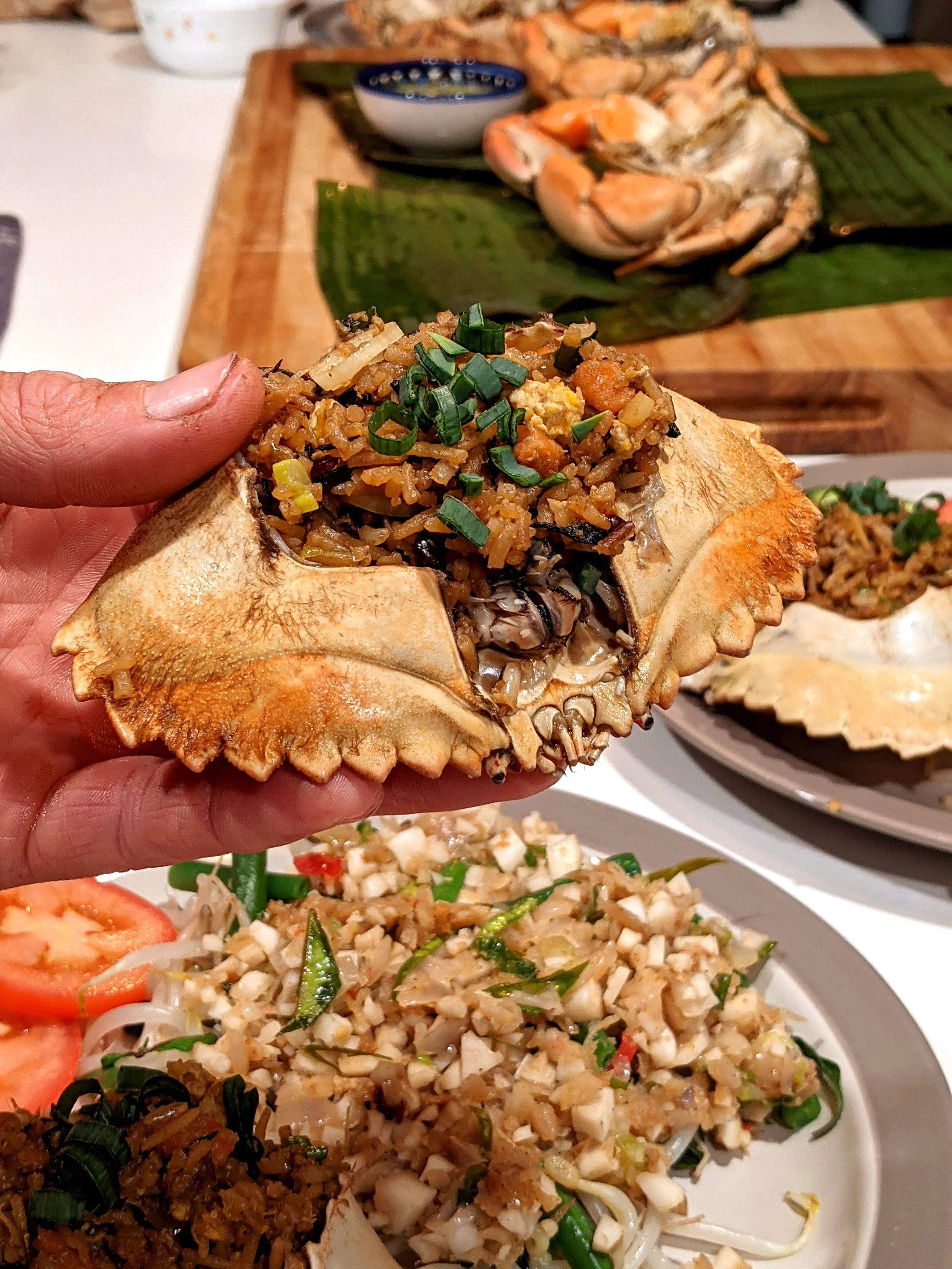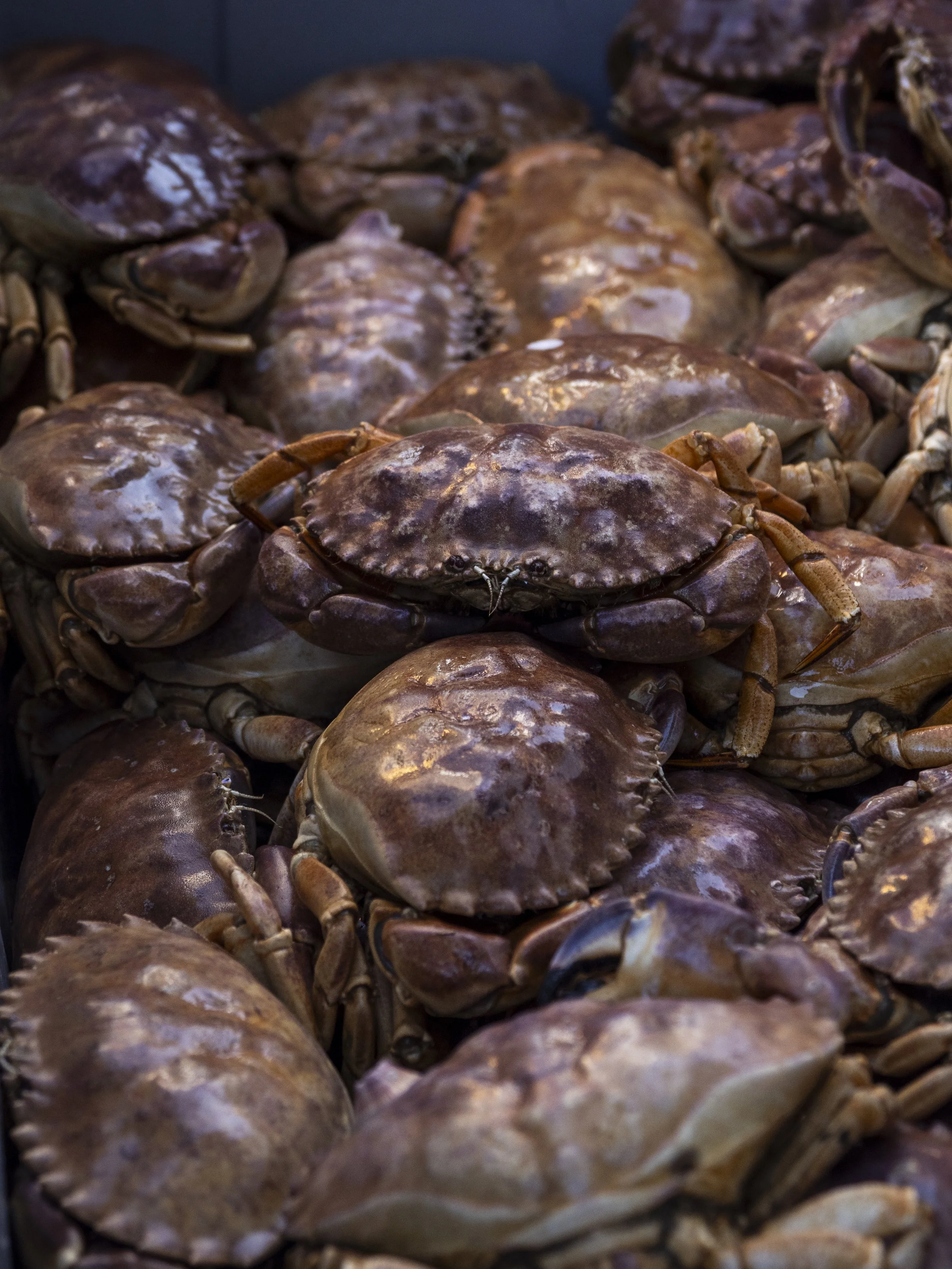Rock Crab Nasi Goreng
Nasi goreng—which literally means "fried rice" in Indonesian and Malay languages—has a fascinating but somewhat contested history.
The basic concept of fried rice dishes has existed in China for millennia, with the earliest records dating back to the Sui Dynasty (589-618 CE). However, nasi goreng as we know it developed its distinct identity in what is now Indonesia.
The dish likely arose as a delicious way to avoid waste - leftover rice from the previous day would be fried with additional seasonings for breakfast. The key distinguishing features of nasi goreng from other fried rice dishes are:
The use of kecap manis (sweet soy sauce) - a distinctly Indonesian ingredient
Serving with various accompaniments like fried egg, pickled or fresh vegetables
The use of chili and terasi (shrimp paste) in many variations.
Nasi goreng served in the shell of freshly steamed crab.
San Diego’s rock crabs offer an unique replacement of the traditional shrimp paste - the “butter” (viscera) inside the body of the crab.
Crab “butter” is a raved-about culinary ingredient on many coastlines, but in some regions and species of crabs, is not safe to consume due to high levels of domoic acid, a naturally occurring marine toxin.
Here in San Diego, the "butter" from commercially caught rock crabs has not historically posed risk as a source of domoic acid toxicity. The California Department of Public Health coordinates with the California Department of Fish and Wildlife (CDFW) and the commercial fishing community to collect and test commercially-caught shellfish toxins year-round, issuing closures and advisories to coastal communities when toxicity levels are high.
To receive updated information about shellfish toxin levels, call CDPH’s toll-free Shellfish Information Line at (800) 553-4133.
San Diego Rock Crabs are sold live at local fishermen’s markets. Photo by Oriana Poindexter
Ingredients
1 female rock crab, 1 male rock crab, scrubbed
3 cups day-old long grain white rice, chilled
1 egg (2 additional fried eggs optional)
3 scallions, finely sliced
2 red chiles, finely chopped (adjust to your taste)
3 cloves garlic minced
1 thumb ginger, minced
1 shallot, diced
2 tablespoons kecap manis (Indonesian sweet soy sauce - substitute with 1.5 tablespoons light soy sauce and 1 tablespoon of brown sugar)
1 tablespoon fish sauce
1.5 tablespoons coconut oil or neutral oil
How to Prepare:
Steam whole rock crabs, pick and reserve meat. Scoop roe and “crab butter” from inside female rock crab. Set aside.
Heat oil in a large skillet or wok on medium heat, and add ginger, garlic, shallot, and chiles. Lightly fry for 1 minute, stirring to prevent burning, before adding the crab butter and roe, and cracking an egg into the pan.
Mix egg, crab butter, and roe thoroughly to scramble. When egg is cooked, add chilled rice. Toss to fry, and season with fish sauce and kecap manis. Taste and adjust seasoning levels to your preference. Cook while mixing continuously for 2-3 minutes. In the last minute, mix in the picked crab meat and minced scallions before removing from heat.
Serve topped with a fried egg and/or in the clean, rinsed shell of the rock crab, alongside freshly sliced cucumber and wedges of ripe tomato.


